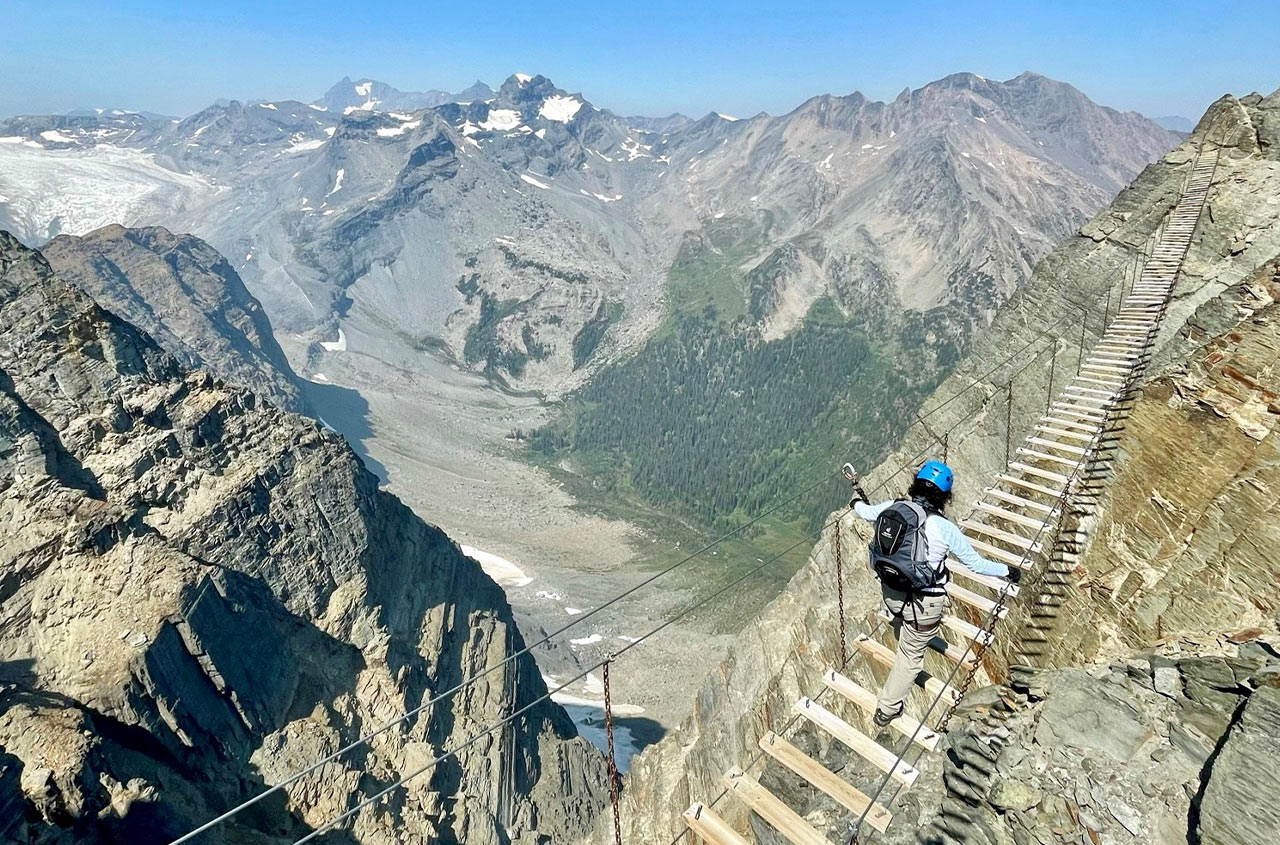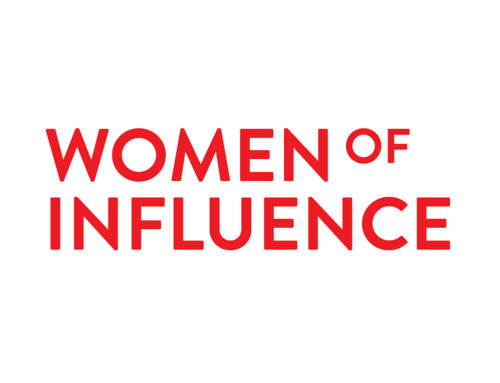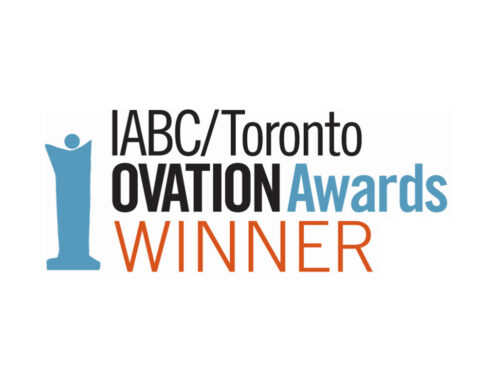I’m constantly seeking ways to improve myself as a person, which helps me grow as a business leader. But sometimes life gets in the way. I know this because in the past year and a half—after turning fifty, getting divorced, and watching my pre-teen kids become increasingly independent, all while managing a national PR agency during a pandemic—I was surprised to discover that I was missing a big part of my former self, one that’s key to an individual’s ability to evolve.
Despite the inevitable ups and downs, being a mother and a business leader are both wonderfully rewarding journeys, but I used to take life-altering adventures that were just about me. And unfortunately, amid all the years of raising young children and serving client interests, the adventurous part of who I am somehow took a back seat. During some serious refection, I realized what I had lost, so I started looking for a way to reacquaint myself with my adventurous side.
Earlier this year, while booking a trip to Kelowna, British Columbia, to attend a celebration of life for my late father-in-law, I was suddenly struck by an epiphany—being away from home would open the door for me to do more than pay my respects to a man who was very special to many people in many ways while reconnecting with friends and family members who I hadn’t seen for too long. It was an opportunity to have a reunion with my former adventurous self. After some spit-balling with friends about how to do this, I decided to try my hand (and legs) at heli-hiking, which is a fancy way of saying hiking in a remote location only accessible via helicopter.
I hiked Mt. Kilimanjaro years ago, but that was a trail walk by comparison to what I found on offer from Canadian Mountain Helicopters (CMH) out of its Bobbie Burns Lodge, which rests amid old-growth forests and beckoning mountain peaks near Golden, British Columbia. Billing itself as a provider of bucket-list adventures that deliver transformative experiences while moving your body and mind through stunning wilderness landscapes, the company offers exclusive helicopter access to “towering arêtes, dramatic moraines, ice-carved valleys, and one-of-a-kind adventures.”
Not being a professional climber, I never imagined being able to take on the outfit’s most challenging trek to the 8,698-foot summit of Mt. Nimbus, but as luck would have it, this mountain top has been made accessible to the general public thanks to a via ferrata route, meaning an “iron path” of embedded climbing rungs and sturdy—but still rickety-looking—suspension bridges.
The Mt. Nimbus via ferrata climb sounded, well, terrifying, but also perfect for me. And not just because it promised to allow me to redefine my perception of a “natural high.” It allowed me to redefine the limitations of my courage. Despite my hike on Mt. Kilimanjaro, as well as several other similar trips over my lifetime, I’ve lived my life desperately afraid of heights, at least until now. Simply put, this iron path allowed me to have a reunion with my younger self while conquering our common lifelong fear of heights together.
After booking my trek, I only had two weeks to prepare, which is not a lot of time for physical training and is extremely short notice for confronting a fear. Nevertheless, I knew I had to do some deep internal work to get my mind primed for the climb. I didn’t take this need lightly. I’ve been doing a lot of self-exploration in recent years, so I was familiar with energy psychology methods. I engaged some powerful practitioners of hypnotherapy and the emotional freedom technique (EFT or “tapping”), who proved to be extremely effective at helping me dive into my subconscious to harness the courage I needed. This changed my mindset about what was possible.
Nevertheless, I’m still amazed that I took on this challenge. Climbing Mt. Nimbus was the scariest thing I’ve ever done, making it the most triumphant experience of my life. In addition to the pride that comes with accomplishment, I returned from the summit with a profound new outlook on leadership and life. This new outlook is framed by the following ten valuable lessons.
Transformation starts with decisions: It is never too late to change if you truly choose to make it possible. My sense of adventure didn’t return by chance. After realizing it was a part of me that I’d been missing, I made a decision to recapture it by climbing the Mt. Nimbus via ferrata, which was the toughest adventure I could imagine within Canada.
Change your mind to change your life: I knew that if I was going to get up that mountain, I was going to have to change how I think and feel about heights, which required seeking specific and proven methods that not only worked, but worked quickly. We often think of our fears and weaknesses as innate and unchangeable, but they’re not. I’m a big fan of Mind Architect Peter Crone, who teaches that it is possible to retrain our brains out of their subconscious childhood programming, and I did just that. Since this climb, I’ve also conquered the CN Tower EdgeWalk with my mother, sister, and son.
A first step gets the ball rolling: Thinking about the full extent of a challenge can make it extremely difficult to start tackling. I can’t tell you how much I hesitated before finally booking this trip. I worried about losing my nerve at the last minute and ending up feeling like a failure. I wasn’t sure I could handle that. I also worried about getting physically hurt. But I finally took a deep breath and just signed up. Once the decision was made, a sense of commitment took over. I stopped hesitating, and started visualizing my success.
Face big challenges with a narrow focus: Even with commitment, a major challenge can become overwhelming, so break it into smaller steps, and focus on taking each one just like the first. The Mt. Nimbus via ferrata climb was built of iron rungs and steel cables. That gave me something to focus on. I never looked down. I focused my eye on the rock immediately in front of me while concentrating my mind on nothing except where my hands and feet were going in the rungs above and below me. While doing this, I repeated Glennon Doyle’s mantra: “I can do hard things. I can do hard things.” It was intense, but narrow focus got me to the top.
Don’t invent judgements: On the first afternoon of my heli-hiking adventure, my trek group took on Grizzly Ridge and I found myself being extremely cautious and tentative as I navigated the steep terrain. That led me to assume my guides would doubt my ability to take on Mt. Nimbus the next day. After a sleepless and stress-filled night, I almost backed out. But I didn’t, which shows that the opinions of others (whether perceived or not) mean nothing compared to personal confidence. To succeed, what I needed most was belief in myself.
Trust is essential when you need the support of things beyond your control to meet a goal. It is what allows you to focus on moving forward, so don’t second-guess your supports if you have no clear reason to question them. It’s a waste of time and energy.
Trust your supports: During our hikes, the guides repeatedly reminded the group to “trust the equipment and trust your feet.” Given my lack of climbing experience, this was easier said than done, at least at first. Trusting my own feet seemed almost counter-intuitive, but they ultimately convinced me that they did know what to do. As for the equipment, I just had to keep telling myself that it was designed to keep me safe and had been thoroughly tested. Trust is essential when you need the support of things beyond your control to meet a goal. It is what allows you to focus on moving forward, so don’t second-guess your supports if you have no clear reason to question them. It’s a waste of time and energy.
Teamwork is critical in every part of life: My guides and fellow climbers were a massive source of support—I could never have made it without them. At the final summit, we had to literally turn around and almost climb outward, away from the mountain, which was terrifying. My guide had to grab me by my backpack, supporting my entire body weight to haul me up. It happened in a flash, but I knew right away that I couldn’t have done it without him. Other climbers provided indispensable support throughout the entire trek, offering advice on advancing from rung to rung while cheering me on. I needed every bit of their encouragement. In other words, don’t just trust people on a team, rely on them. That’s never a sign of weakness—it’s a sign of efficient teamwork.
Laughter eats stress for lunch: Humour is a team’s best friend. I’m not sure I’ve ever done anything as physically demanding and mentally taxing as this climb. The focus and hard work it took were intense. This could have made reaching the summit a moment to break down emotionally. But instead, we had an incredulous laugh at the unfathomable thing we had just completed. It was a huge release, and it was exhilarating.
Celebrate success with gratitude: Success is never a solo event. Having made it to the top of Mt. Nimbus, I was overcome by a sense of gratitude for everything and everyone that helped me do it. This went well beyond my guides and other climbers. I took the time to reflect on all the things I’m grateful for in my life, like the fact that my kids support me and champion my adventurous side. I am grateful for the hardworking, determined, and unrelenting nature that I got from my mother, and her mother and her mother. I am grateful that my grandparents moved to Canada and built a foundation that would ultimately give me the luxury to even consider such an adventure and show my kids that transformation is possible. Reflecting on these things helped me develop an even deeper appreciation of my accomplishment.
Enjoy the process: When I looked at the photos after our climb, I realized how serious I looked in almost all of them. I was so focused on just making it to the top that I only started to enjoy myself once we reached the suspension bridge, just below the final summit. This is when I realized there’s often no point in challenging yourself if you aren’t having fun. So, while maintaining a narrow focus to face daunting challenges, don’t pass up opportunities to enjoy the ride. The day after climbing Mt. Nimbus, we tackled the Conrad Glacier, another “iron path” up sheer rock faces and across raging glacier waterfalls. This time, I frequently looked around, and found myself smiling with intense joy, pride, and gratitude. This allowed me to appreciate the accomplishment at a higher level.
I suspect that my next adventure, whatever it is (and you can bet I’m already on the lookout), will bring a whole new set of lessons. In the meantime, if you ever have the chance to tackle the Mt. Nimbus via ferrata, I urge you to take it, especially if you have a fear of heights. Chances are, if you push yourself to safely confront limitations, you’ll wonder why you didn’t do it sooner and learn that it’s never too late to learn new lessons, or to transform your life and your perspective.





